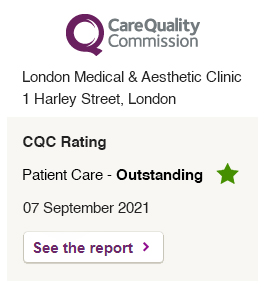In this world the majority of men and women are not satisfied with their facial or body image.
The popularity of cosmetic procedures continues to rise with non-surgical treatments more common than surgical treatments.
Expectations of cosmetic patients have risen dramatically fuelled by successful treatment outcomes seen on celebrities and in the media.
The oxford dictionary describes the management of expectations as seeking to prevent disappointment by establishing in advance what can realistically be achieved.’
When expectations are not met
A clinic providing cosmetic treatments will usually hear from their dissatisfied patient. At the mild end, clinicians will hear about it directly or indirectly. Bad publicity through social media can damage the reputation of the clinic. The worst outcome for clinics is formal complaint and/or a claim for damages.
Dissatisfaction that generates these responses usually comes from patients expectations not being met or managed. It is vital that expectations are identified in the first consultation and that decision is documented.

Minimizing the risk
It is important to recognize that motives for seeking treatment are diverse and complex.
Age: younger patients are particularly sensitive to the opinions of their peers and to images posted on social media. However successful corrections of unattractive features in this age group can have an extremely positive impact.
Media: television, internet, films and magazines can give way to extremely unrealistic expectations. Social media sites such as Instagram encourage users to take flawless pictures. This has led to a high rate of dissatisfaction with body image.
Psychopathology: Low self-esteem can lead to unrealistic goals and expectations. Body dysmorphic disorder may be a contraindication to treatment. When psychopathology is severe appropriate referral may be required.
Educational Level: expectations tend to be higher among educated patients.
Knowledge Level: Education about the details of the treatment may modify expectations as good information is associated with better outcomes.
Cost: Clarifying the cost of the treatment or intervention is essential.

Practitioner Factors
All practitioners should have appropriate expectations as to what can be achieved for each patient and should work within their limits and experience.
In some cases, there are patients that there will be a considerable range of treatment options for. Some patients want many aspects of their appearance addressed. The practitioner needs to be able to prioritize and needs to be able to differentiate between expectations that are realistic and those that are not.
On some occasions, patient’s requests for particular treatments may have to been turned down and it is essential to explain to the patient why this is the case.
Practitioners need to know and explain the likely downtime and adverse effects of all treatments. Forewarning about these is shown to reduce dissatisfaction. Ongoing advice and support can be important in determining whether expectations have been met and will also be educational for the practitioner.
Informed Consent

Dr Ayham Al-Ayoubi: Informed consent is essential to any treatment. An understanding of what the patient wants and expects along with an educated understanding of the patient’s condition are the central principles of informed consent.
More people consider cosmetic surgery than actually go ahead with the treatment. Trust in the practitioner is vital in a patient’s decision to proceed. A full discussion of the expectations of the patient can help generate trust and help to ensure a successful outcome.





